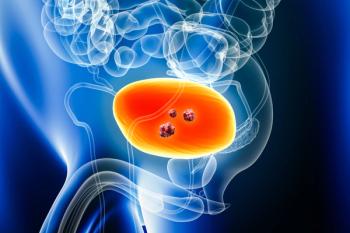
A phase 3b study found that Black individuals who switched to bictegravir/emtricitabine/tenofovir alafenamide were able to maintain virologic suppression after 72 weeks.

Julia is an associate editor for The American Journal of Managed Care® (AJMC®) and joined AJMC® in 2022. She produces written and video content covering multiple disease states, and assists in the screening process for manuscripts submitted to AJMC®.
She has a BA in English language and literature from Rutgers University. You can connect with Julia on LinkedIn.

A phase 3b study found that Black individuals who switched to bictegravir/emtricitabine/tenofovir alafenamide were able to maintain virologic suppression after 72 weeks.

The updated guidelines from the US Preventive Services Task Force (USPSTF) have led to an increase in screening for colorectal cancer (CRC) in individuals aged 45 to 49 years.

Increased time spent on discussing testing for colorectal cancer (CRC) was associated with patient satisfaction in older adults.

The start of AIDS Awareness Month puts a spotlight on how treatment for HIV and AIDS has progressed over the past 40 years.

Inpatient hospital care was primarily controlled by 1 or 2 health systems in nearly half of the metropolitan areas in the US in 2022.

Children entering kindergarten had lower vaccination rates and higher exemption rates compared with previous years.

Interventions to diagnosis amblyopia earlier could help in addressing inequities in the resolution of amblyopia.

Patients with colorectal cancer (CRC) liver metastases had reduced risk of intrahepatic recurrence when using intraoperative contrast-enhanced ultrasounds.

Systemic racism, including the practice of redlining, has had an enduring effect on health outcomes in people living with HIV, including time to viral suppression.

Emotional and social support for patients with retinitis pigmentosa could reduce the incidence of depressive disorder in this demographic.

Out-of-pocket costs for biosimilars and generics are still high for patients despite these drugs leading to estimated savings of $445 billion in 2023.

Follow-up in men living with HIV who have sex with men should be performed to assess quality of life due to sexual function.

A robust antibody response was found in patients in residents of long-term care facilities who were given the respiratory syncytial virus (RSV) vaccine.

As hurricane season approaches, doctors, pharmacists, and clinics prepare for treating their patients when accessibility is limited.

Ted Okon, MBA, executive director of the Community Oncology Alliance, spoke with The American Journal of Managed Care® about how the Federal Trade Commission's (FTC) lawsuit against pharmacy benefit managers (PBMs) could affect the future of pharmaceuticals and oncology.

Colorectal cancer (CRC) could be affected by various factors involved in sleep, including snoring.

Medicaid coverage was able to help some people lower their blood pressure according to a new study.

Information on the disease and treatments, assistance with insurance, and transportation are among the types of support needed by patients with multiple myeloma to improve outcomes and overall burden.

More than 25 million people lost their Medicaid coverage during the unwinding process conducted by all states following the pandemic.

A substantial overall survival (OS) disparity by race and ethnicity was found in patients with colorectal cancer (CRC), with socioeconomic status and tumor molecular features largely contributing to the difference in OS.

MYL-1701P displayed similar efficacy, safety, and immunogenicity when compared with reference aflibercept to treat diabetic macular edema.

Lowered costs and incremental effectiveness could improve when using biomarker-guided selection for treatment of patients with metastatic colorectal cancer using first-line nivolumab.

Enfortumab vedotin showed a robust disease control rate in patients with urothelial cancer outside of a clinical trial, and its efficacy was not inferior in patients with diabetes and/or neuropathy.

Trastuzumab deruxtecan (T-DXd) was effective in patients with HER2-positive (HER2+) metastatic breast cancer, with no new safety profiles observed.

Goals including addressing all of hunger and food insecurity, unmet needs for mental health services, and unstable housing or homelessness in people living with HIV are unlikely to meet their 2025 thresholds.

An update to the colonoscopy guidelines released by the American College of Gastroenterology and the American Society for Gastrointestinal Endoscopy could have implications on how colonoscopies are measured in the future.

An AI segmentation system was able to identify changes in retinal segmented features based on optical coherence tomography (OCT) images.

Drug use, participation in exchange sex, and depressive symptoms were all found to be associated with bacterial sexually transmitted infections (STIs) in sexual minority men living with HIV.

Patients who received radiotherapy without a recurrence of rectal cancer had significantly lower quality of life compared with patients who did not receive radiotherapy.

There were no significant differences found between people with and without HIV when it came to their periodontal profile.

259 Prospect Plains Rd, Bldg H
Cranbury, NJ 08512
© 2025 MJH Life Sciences®
All rights reserved.
